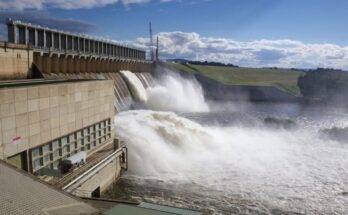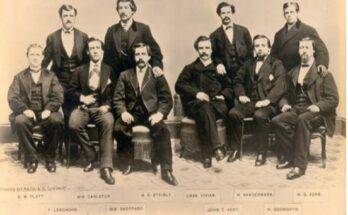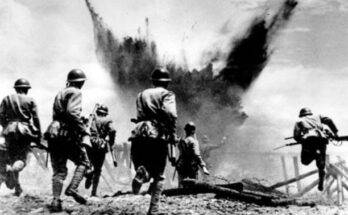Vikings
Vikings, also called Norsemen or Northmen, were Scandinavian maritime warriors who invaded and settled a large portion of Europe between the 9th and 11th centuries. Their disruptive presence had a significant impact on European history. These brutal warriors from Denmark, Norway, and Sweden were likely inspired to carry out their raids by various circumstances, from domestic overpopulation to the relative helplessness of victims abroad.
The landowner chieftains and clan chiefs, their retainers, freemen, and any young, intrepid clan members who were out for adventure and plundered abroad made up the Vikings. These Scandinavians were independent farmers at home, but when they were at sea, they were robbers and plunderers. The Scandinavian nations appear to have had an almost endless supply of labourers throughout the Viking era, and capable leaders who could marshal troops into conquest bands and armies were never in short supply. These bands would raid villages and towns throughout the European coastlines while navigating the seas on their longships. The early Scandinavian word for “pirate,” king, was given to them for their acts of burning, pillaging, and murder.
clan chiefs, their retainers, freemen, and any young, intrepid clan members who were out for adventure and plundered abroad made up the Vikings. These Scandinavians were independent farmers at home, but when they were at sea, they were robbers and plunderers. The Scandinavian nations appear to have had an almost endless supply of labourers throughout the Viking era, and capable leaders who could marshal troops into conquest bands and armies were never in short supply. These bands would raid villages and towns throughout the European coastlines while navigating the seas on their longships. The early Scandinavian word for “pirate,” king, was given to them for their acts of burning, pillaging, and murder.
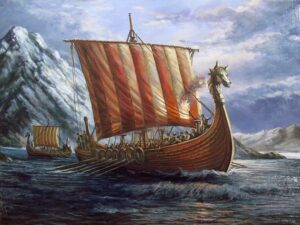
In some instances, the precise ethnic makeup of the Viking forces is unknown. Still, it is reasonable to assume that the Swedes were responsible for the Vikings’ spread into Russia and the Baltic region. Norway indisputably carried out the non-military colonisation of Iceland, the Faroe Islands, and the Orkney Islands.
England
Desultory raiding started in England in the late 8th century, the raid on the monastery of Lindisfarne [Holy Island] in 793, but it picked up steam in 865, a force led by the descendants of Ragnar Lothbrok—Halfdan, Inwaer(Ivar the Boneless), and possibly Hubba (Ubbe)—conquered the ancient kingdoms of East Anglia and Northumbria and shrunk, however, it was unable to defeat Alfred the Great’s Wessex, with whom a truce was signed in 878 and which served as the foundation for a treaty in or shortly after 886. This acknowledged the Danish control over a large portion of England. Despite being heavily outnumbered by new Viking forces from 892 to 899, Alfred eventually defeated them. The spirit of Wessex was so unchanged that his son Edward the Elder was able to start the reconquest of Danish England. Small Danish republics on former Mercian and East Anglian territory had already collapsed before his death in 924. The distant Northumbria fought longer, partly under the leadership of Irish-born Viking chieftains, but Eadred eventually extinguished the Scandinavian dominance there in 954. England was ultimately included in the Canadian empire when Viking invasions of the nation resumed in 980.
The western seas, Vinland, and Ireland
Scandinavian expansion reached almost every point imaginable in the western oceans. At least 900 settlers arrived in Iceland and established colonies in Greenland, and an attempt was made to colonise North America. The Orkney, Faroe, and Shetland islands, the Hebrides, and the Isle of Man all experienced the development of communities during this time.
Since Rechru, an unnamed island, was devastated in 795, Scandinavian invasions of Ireland have been documented. The battle continued after then, and Scandinavian kingdoms emerged in Dublin, Limerick, and Waterford, even though the native population frequently more than held its own. For a period, the kings of Dublin believed they were powerful enough to move abroad, and at the beginning of the 10th century, many of them held power in Northumberland and Dublin. The War of Clontarf in 1014, when the Irish Scandinavians, assisted by the Earl of Orkney and some native Irish, suffered a terrible loss, put an end to the possibility that Ireland would be united under the Scandinavian rule. However, the Scandinavians were still prominent (albeit Christianized) in Dublin, Waterford, Limerick, Wexford, and Cork when the English started a war against Ireland in the 12th century.
The Carolingian empire and France

Viking colonisation was never as extensive in the well-defended Carolingian empire as in the British Isles. Outside of Normandy, there is a minimal Scandinavian impact on continental institutions and languages. However, there were still sporadic raids until the end of the Viking era. In the 10th century, communities along the Seine River gave rise to the duchy of Normandy, the only long-lasting Viking achievement in what had been Charlemagne’s kingdom (see Norman).
The Vikings occasionally attacked farther south than France, in the Iberian Peninsula and along the Mediterranean shores, but they didn’t accomplish anything that lasted.
Eastern Europe
Compared to the Viking expansion on the Atlantic coasts, the eastern Viking expansion was probably less violent. While there was undoubtedly a lot of sporadic raiding in the Baltic and the phrase “to go on the east-Viking” meant to engage in such activity, no Viking kingdom was established with the sword.
The Scandinavians’ largest eastward migration took them right into the centre of Russia. Although the Scandinavians were once the majority in Novgorod, Kyiv, and other centres, they were quickly assimilated by the Slavonic population, to whom they gave their name Rus, “Russians,” making it difficult to determine the extent of this penetration.
Two of the Rus’ commercial treaties with the Greeks are preserved in the Primary Chronicle under the dates 912 and 945; the names of the Rus signatories are unmistakably Scandinavian, indicating that they were the leading traders. However, the Rus occasionally expedited to plunder like their relatives in the west. After 1050, they ceased to exist as distinct people at the latest.
A new Viking movement toward the east seems to have occurred in the first half of the 11th century. The names of the men who accompanied Yngvarr on his journeys are listed on some Swedish runic stones. Only fabled accounts of these eastward journeys’ precise destination and purpose have survived. The Scandinavians’ involvement in the east also included serving as mercenaries in Constantinople (modern-day Istanbul), where they helped to create the Varangian Guard of the Byzantine emperor.

The Viking chief was a historical figure by the eleventh century. Because Denmark could incorporate the more rebellious elements of its population into its royal armies, it became a conquering power. Norway and Sweden lost their ability to engage in external exploration. Before becoming king of Norway in 1015, Olaf II Haraldsson was the final Viking chief in the old independent tradition.
Gbaya
Gbaya, also known as Baya or Gbeya, are people who inhabit the southwest of the Central African Republic, the north of the Congo (Brazzaville), and the northwest of the Congo (Kinshasa). They were estimated to number 970,000 at the turn of the 20th century. They spoke a language similar to their Banda and Ngbandi neighbours in the Adamawa-Ubangi subgroup of the Niger-Congo language family.
Early in the 19th century, the Gbaya fled from what is now northern Nigeria’s Hausa region into the southeast to escape Usman dan Fodio’s jihad (holy war). The Gbaya overcame the people they faced by annexing them, integrating them, or moving ahead of them under the leadership of Gazargamu, their war chief. The Sokoto, Kara, Buli, Kaka, and Bwaka are modern Gbaya subgroups that exhibit this assimilation of conquered peoples. Every year, Fulani enslaved people from what is now northern Cameroon assaulted the Gbaya.
Due to the violent imprisonment of Gbaya men and women as porters and labourers during the colonial period, particularly in the early 1920s, the Gbaya fought the French army. They started a three-year uprising in 1928 to protest the conscription of slave labour on the Congo-Ocean Railway. A French “horror campaign severely destroyed the Gbaya,” and the effects were seen for many years.
The Gbaya community followed patrilineal descent and has never had a state. In the past, war chiefs were only appointed during emergencies and then stripped of their authority. Village chiefs served as judges and symbolic leaders before the French colonists transformed them into administrative magistrates. Marriage, religious rites, and commerce with foreigners (like Arab caravanners) were all governed by the significant identification group of clans. Initiates received instruction in agricultural, social, and religious knowledge and abilities. Age groupings termed labi cut across clan affiliations and further ensured intergroup cohesion in times of conflict.
Corn (maize), cassava, yams, peanuts (groundnuts), and tobacco are all grown in rural Gbaya. Besides, they hunt and fish. French colonists introduced two cash crops: coffee and rice. In specific locations, the traditional Gbaya way of life was severely disturbed by the late 1930s diamond rush, yet, diamond prospecting is still vital to the local economy.
Uzbek
Any member of the Central Asian ethnic group known as the Uzbek can be found mainly in Uzbekistan and other countries in Central Asia and Afghanistan. The Turkic language of the Altaic family of languages, Uzbek, is spoken by the Uzbeks in one of two varieties. More than 16 million Uzbeks reside in Uzbekistan, although there are also minor populations in Kazakhstan, Turkmenistan, and Sinkiang in China. Additionally, there are 2,000,000 Uzbeks living in Afghanistan, 1,380,000 in Tajikistan, and 570,000 in Kyrgyzstan.
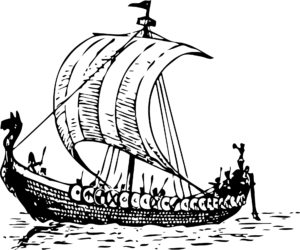
The Uzbek label references z Beg (Uzbek), the Mongol khan who oversaw the Golden Horde’s peak of power. The nomadic Mongol or Turkic tribes that entered the area between the 11th and 15th centuries mixed with old, sedentary Iranian groups to form the Uzbeks. The former and the latter, which also comprised Kipchaks, Karluks, and Turks of Samarkand, shared Tajik ancestry (relatively more Mongolized groups). With the invasion of Mongol nomadic tribes led by Muhammad Shaybn Khan in the early 16th century, a third component was introduced.
Most Uzbeks are Sunnite Muslims of the “Hanafi rite”, a sect known for accepting individual opinions (ray) in the lack of Islamic precedent. The Uzbeks, particularly the urban Uzbeks, are regarded as the most devout Muslims in Central Asia; among the customs still followed include early weddings for young girls, bride-price, religious marriages, and funerals. Of all the Turkic peoples who were once under Soviet administration, the Uzbeks are the least Russified and almost all still identify Uzbek as their mother tongue.
Lobi
People known as Lobi live in western Burkina Faso (previously Upper Volta) and the Ivory Coast and speak a Gur language related to the Niger-Congo family. They are farmers and hunters who cultivate millet and sorghum as food essentials. Without a formal governmental structure, the Lobi have always ruled themselves through a clan system.
Until the arrival of Islamic influence in the region in the 14th century, religion in the area was solely animistic. It is common to practise polygyny. France conquered the Lobi territory in 1897, but the population wasn’t brought under control until 1903 as a result of the Lobi’s skilful usage of poisoned arrows. People known as Lobi live in western Burkina Faso (previously Upper Volta) and the Ivory Coast and speak a Gur language related to the Niger-Congo family. They are farmers and hunters who cultivate millet and sorghum as food essentials. Without a formal governmental structure, the Lobi have always ruled themselves through a clan system.
FAQ’S
- Where did Vikings originally come from?
The homelands of the Vikings were in Scandinavia, but the countries of Scandinavia as we know them today did not exist until the end of the Viking Age. Wherever they lived, the Viking-age Scandinavians shared common features such as house forms, jewellery, tools and other everyday equipment.
King Alfred ruled from 871-899 and after many trials and tribulations (including the famous story of the burning of the cakes!) he defeated the Vikings at the Battle of Edington in 878.

